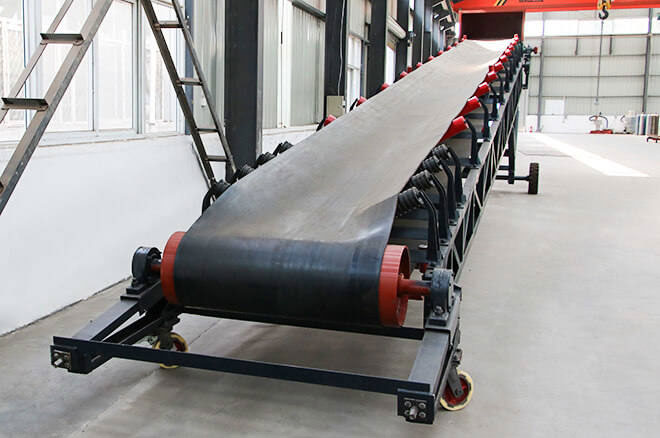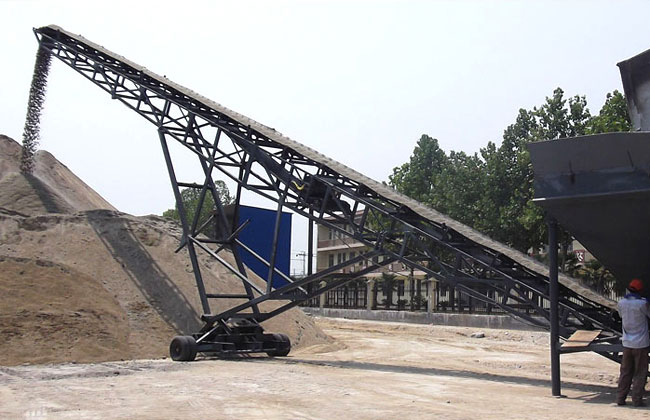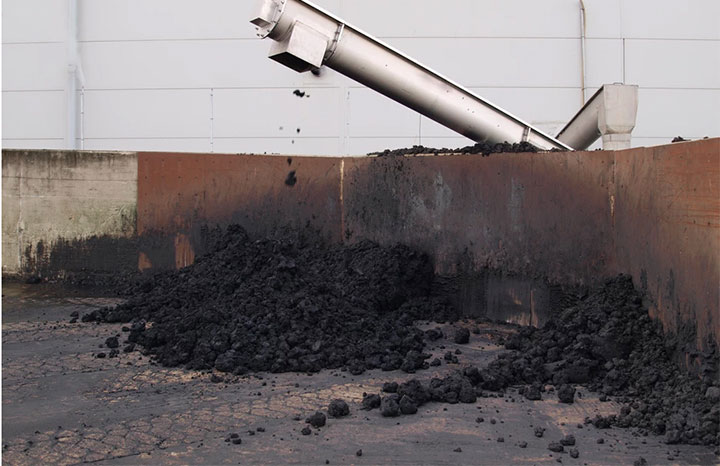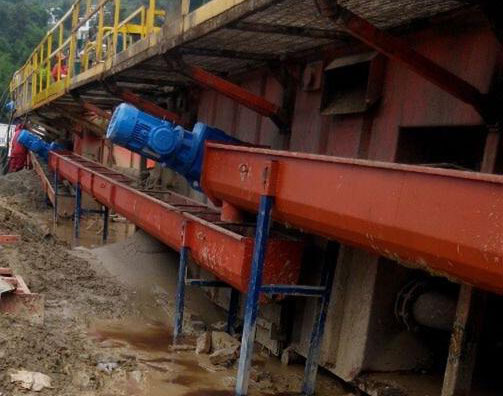What are the types of Dirt Conveyor, belt conveyor, screw conveyor.

A belt conveyor is a friction driven machine that transports material in a continuous manner. It can carry out the transportation of broken materials, and also can carry out the transportation of finished items. It is used for horizontal transportation or inclined transportation, and is very convenient to use. It has the advantages of large conveying capacity, simple structure, convenient maintenance, low cost and strong versatility. However, when transporting sludge, due to the high moisture content and high viscosity of the sludge, it is easy to stick to the belt, which may easily cause the conveyor belt to deviate and slip during the transportation process, which seriously affects the service life of the belt. Moreover, the belt conveyor is greatly affected by the site. It generally needs to build a long belt corridor for its layout, and the lifting height is relatively limited. Generally, the inclination angle does not exceed 20 degrees. Choosing this transportation method requires higher civil engineering costs and a larger site. In terms of sludge transportation, the belt conveyor is suitable for the transportation of dried sludge with a moisture content below 40%. It is suitable for short-distance (less than 50 m) and low-lift (less than 20 m) sludge transportation, and is often used to transport heat-dried sludge to designated locations.

By setting the steering device on the belt conveyor, a single belt conveyor can realize the change of the conveying inclination; but when the conveying direction on the plane is turned, it is generally necessary to add a conveying equipment.

Screw conveyor belongs to pressureless conveying and is one of the most commonly used sludge conveying methods. The screw conveyor pushes the sludge forward through the rotating screw blades. The force that keeps the sludge from rotating with the screw blades is the weight of the sludge and the friction between the sludge and the casing. According to whether there is a screw shaft, the screw conveyor can be divided into a shaft screw conveyor and a shaftless screw conveyor; according to the number of screws, it can be divided into a single screw conveyor and a double screw conveyor. It can convey materials in horizontal, inclined or vertical directions, and can complete mixing, stirring and cooling while conveying materials.

For sludge, the screw conveyor is suitable for conveying 60% to 85% of the sludge with a relatively loose structure and medium viscosity; it is suitable for short-distance (less than 25 m) and low-lift (less than 8 m) sludge conveying, and is often used in small and medium-sized In the sludge dewatering machine room of urban sewage treatment plants, the dehydrated sludge is transported to sludge storage bins or truck tankers. A single screw conveyor can only realize horizontal or inclined conveying. When the conveying direction and conveying angle change, an additional conveying equipment needs to be added. When transporting sludge with a moisture content of about 80%, the inclination angle of the screw should not be greater than 25 degrees.
The trough of the screw conveyor is closed, which is convenient for short-distance transportation of materials that are easy to fly, and materials that are loose, moderately viscous, and not easy to agglomerate continuously and evenly. It can be loaded at any point on the line, and can also be unloaded at many points; it can also perform mixing, stirring and cooling operations during the transportation process. But at the same time, its unit power consumption is large, the material is easy to break and wear, and it is very sensitive to overload. Due to such shortcomings, screw conveyors can generally only transport frictional powder, granular and small bulk materials in a short distance. granular material. The conveying length is generally 5-30m, and when it exceeds 40m, the energy consumption is particularly large, which is very uneconomical.
In this article, we have explored the relevant information and application scenarios of dirt conveyors in depth. If you are interested in dirt conveyors and want to know more details, please click the link below to go to our product page where you will find more details, specifications and pricing.
Address:China,Yanjin county forest park gate to the west 1000 meters north road.